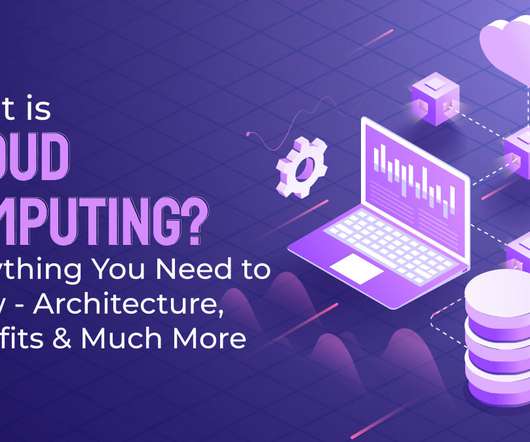What is Cloud Computing? Everything You Need to Know – Architecture, Benefits & Much More
Openxcell
JANUARY 6, 2023
Just a few of the existing cloud services include servers, storage, databases, networking, software, analytics, and business intelligence. Cloud computing definition. Cloud computing – How does it work? The cost of cloud storage varies depending on your needs. They pay for it as they need it.















Let's personalize your content